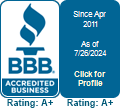Recordkeeping Part II – Financial Records
 Nonprofits should always maintain good financial records. Nonprofit organizations need financial statements for the following reasons:
Nonprofits should always maintain good financial records. Nonprofit organizations need financial statements for the following reasons:
- To prepare their annual tax returns with the IRS (form 990s);
- To report the financials to their members;
- To apply for grants;
- To write a Business/Strategic Plan;
- To evaluate the organization’s accomplishments; etc.
Based on the financial statements, the organization’s Board of Directors make educated decision on which tax return their organization is eligible to file with the IRS – f990-N, f990-EZ or f990s. The main financial statements are Profit & Loss Statement and a Balance Sheet. Most accounting softwares generate the financial statements for the reported period.
The Profit & Loss Statement summarizes organization’s revenues and expenses for the reported period. Nonprofit organizations may have different sources of revenues (grants, contributions, donations, membership dues, gross receipts from selling goods, revenues from fundraising expenses and other miscellaneous income). Nonprofits often have inkind donations. The inkind donations also become part of the organization’s revenues and they need to be included with their estimated value.
The expenses are generally divided into:
- Administrative expenses – administrative expenses include: office expenses; accounting; legal; any fees the nonprofits are paying, etc.
- Program expenses – these expenses are directly related to the organization’s exempt purpose. If this is a youth sports organization, the program expenses may cover the cost of the sports equipment and uniforms; coaches’ salaries; field rental fees; competition entry fees; insurance; etc.
- Fundraising expenses – expenses which are directly related to the fundraising efforts of the nonprofit.
The Balance Sheet includes information on the organization’s assets, liabilities and equity at the end of the reported period. The assets are everything that the nonprofit possesses and include: current assets (cash, petty cash, savings), accounts receivable due for services that have already been performed; and noncurrent assets, such as automobiles, buildings, machines, equipment, land and other. The liabilities show the organization’s obligations. Some examples of liabilities include: mortgages, notes payable, credit card and payroll obligations. The Equity includes the initial capital of the organization and the retained earnings.
In our example (youth sports organization), the Balance Sheet as of December 31st 2015 may consist of:
- Assets - cash in the bank account; some sport equipment
- Liabilities – credit card obligations; payroll payables
- Equity –funds at the end of the year that will be reinvested in the organization’s activities.
Working on the organization’s financial statements is a responsible and time-consuming task, requiring professionalism and strong detail-orientation skills. Organizing your
nonprofit financial paperwork is the first step towards successful preparation of the financial statements.
To request your free copy of the Financial Statements template, please contact us at: This email address is being protected from spambots. You need JavaScript enabled to view it..





